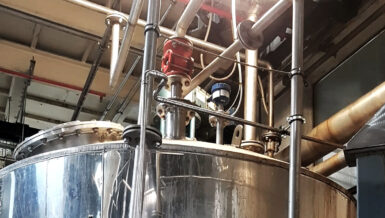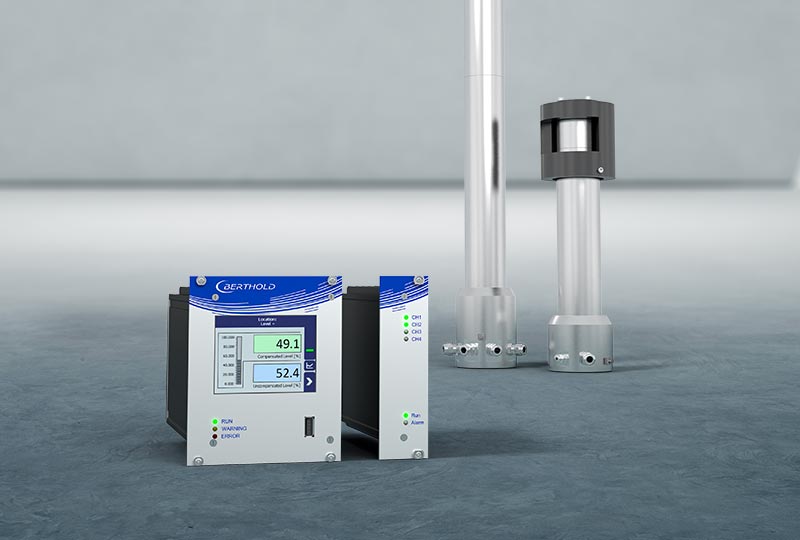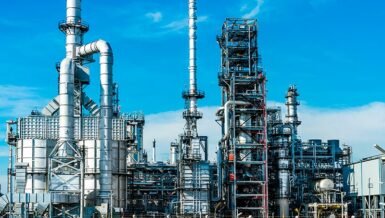Sophisticated signal processing filters out false reflections and other background noises. The exact level is then calculated, by factoring in tank height and other configuration information. The circuitry is extremely energy efficient so no duty cycling is needed as with other radar devices. This allows the device to track high rates of level changes up to 4,5 m/minute (180″/min).
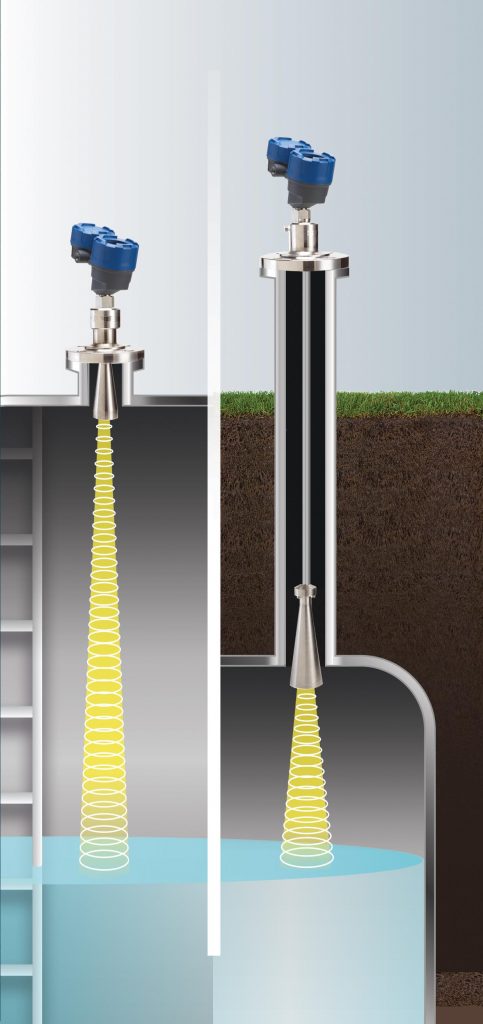
Of the two operational technologies in common use today, Magnetrol utilizes Pulse Burst Radar rather than frequency modulated continuous wave (FMCW) for Radar level measurement. Pulse Burst Radar operates in the time domain and does not require the complex and expensive processing required to enable FMCW.
Because echoes are discrete and separated in time, Pulse Burst Radar is more efficient at sorting through extraneous echoes and selecting the one reflected by the true level. Pulse Burst Radar also has excellent averaging characteristics, important in those applications where a return signal is affected by factors described below in “The Three D’s of Radar”.
Unlike true pulse devices that transmit a single, sharp (fast rise-time) waveform of wide-band energy, Pulse Burst Radar emits short bursts of 6 GHz or 26 GHz energy and measures the transit time of the signal reflected from the liquid surface. Distance is then calculated utilizing the equation:
Distance = C x Transit Time/2, (where C = Speed of Light)
The level value is then developed by factoring in tank height and other configuration information. The exact reference point for distance and level calculations is the sensor reference point – the bottom of an NPT thread, top of a BSP thread, or face of a flange.
The three Ds of radar
Radar applications are influenced by three basic conditions:
The Dielectric of the process medium;
The Distance, or measuring range of the application; and
A variety of Disturbances that may attenuate or distort the radar signal.
Low dielectric media can weaken radar’s return signal and thus shorten a device’s effective measurement range. Pulse Burst Radar provides accurate measurement even for low dielectrics; however, in instances where the dielectric is extremely low, as is the case with liquid gas, fuels and solvents, or where boiling and/or flashing can exist, Guided Wave Radar (GWR) may be the better choice in radar technology.
The distance, or measurement range, of Pulse Burst Radar is a function of the type of antenna selected, the dielectric constant of the media, and the presence of signal interference. Disturbances caused by turbulence, foam, false targets (interior tank obstructions causing false echoes), multiple reflections (reflections from off the tank roof), or a high rate of level change, can weaken, scatter, or multiply radar signals. Very high and very low liquid levels can also be problematic.
Signal processing
The signal processing function of radar is critically important because radar exhibits interference effects similar to those that affect light. It is the quality of a device’s signal processing, in fact, that separates today’s leading-edge radar transmitters from the others.
Pulse Burst Radar extracts true level from false targets and other background noise through its sophisticated signal processing capabilities. Pulse Burst Radar circuitry is extremely energy efficient; so no duty cycling is necessary to accomplish effective measurement. For this reason, Pulse Burst Radar can also track high rates of change that have been impossible with other loop-powered radar transmitters. Although Pulse Burst Radar has a powerful false target recognition and rejection routine, minimizing false target reflections is significantly affected by proper installation.
Antennas
The transmitter’s antenna transmits and receives the radar signal. Maximum measuring range of each antenna is chiefly dependent upon dielectric constants and the degree of turbulence. Horn antennas will measure dielectric media as low as 1.4, while the minimum dielectric for rod antennas is 1.7.
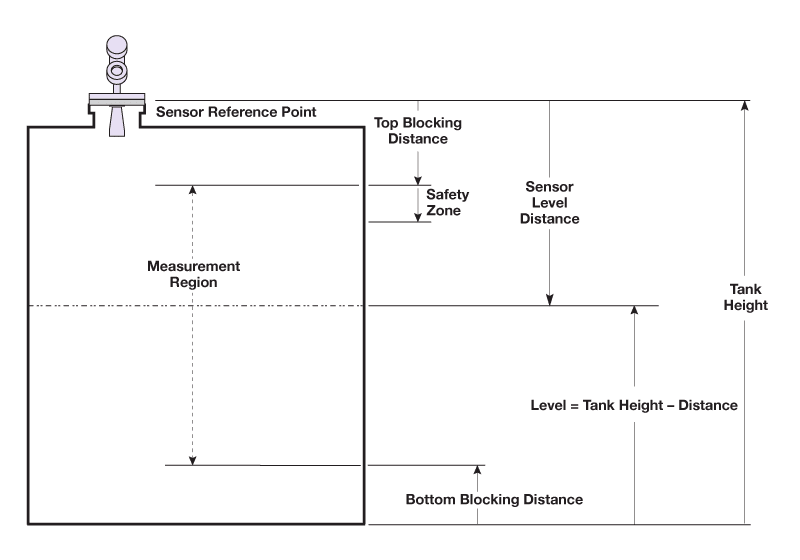
Benefits
Pulse Burst Radar accurately and reliably measures a wide range of media in a broad range of process conditions, from calm product surfaces and water-based media to turbulent surfaces and aggressive hydrocarbon media. As a non-contact device, Pulse Burst Radar is not susceptible to the complications that can arise whenever a probe is in contact with the process media, such as coating by viscous media or corrosive attack due to aggressive chemicals. The greater the measuring range, the more does radar prove itself to be the economical solution, given the cost of extended probe lengths. Radar is virtually unaffected by temperatures, pressures, the presence of vapors, or air movement within a vessel’s free space. Changes in specific gravity, conductivity, or dielectric constants also have no effect on measurement accuracy. As a 100% electronic instrument, the absence of moving parts translates into low maintenance costs; and, being a two-wire, loop-powered device, power requirements and installation are vastly simplified.





